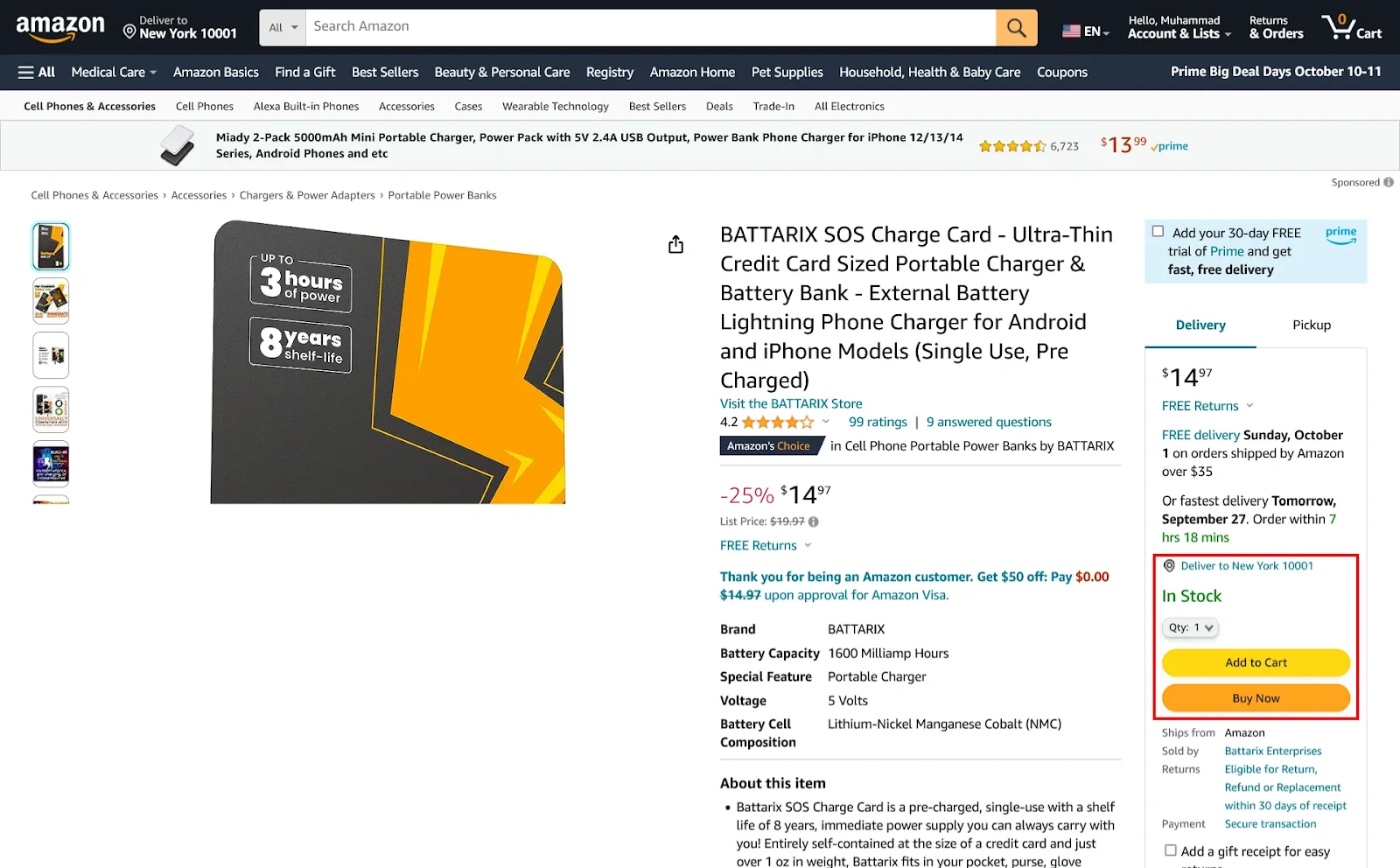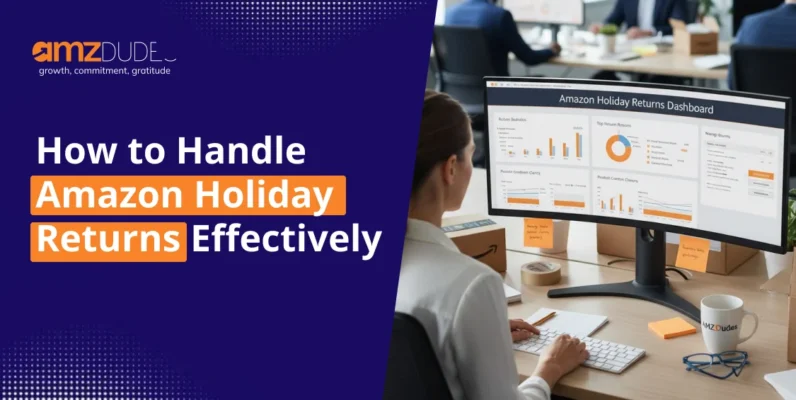Did you know that over 80% of Amazon sales come from the Buy Box? Winning the Buy Box is crucial, and effective repricing strategies can significantly improve your chances. Click here if you’re wondering How to Win ‘Buy Now’ Box on Your Amazon Product.
Let’s explore four Amazon repricing strategies to help you stay competitive and boost your profitability.
Understanding Basics Of Amazon Repricing?
Amazon repricing involves adjusting your product prices to stay competitive in the marketplace. This is essential for winning the Buy Box, which is the box on a product detail page where customers can start the purchasing process by adding items to their cart.

The Buy Box rotates between sellers offering the same product, with factors like price, seller metrics, and shipping time affecting the rotation. Amazon repricing strategies help ensure your prices are competitive without sacrificing profit margins.
Why Are ‘Effective’ Amazon Repricing Strategies Important?
Before diving into the decision to reprice or re-price your products, let’s break down the key costs that shape a product’s retail price:
- Customer Demand: When the demand for a product overtakes the availability for a product, it hikes its price, especially if it’s a hot, new item.
- Manufacturing Costs: Think about raw materials, R&D, manufacturing, shipping, and factory profits. Many sellers set prices based on these to ensure they’re making a decent profit.
- FBA costs for Sellers: If you choose Fulfillment by Amazon, inventory storage fees and shipping costs can significantly impact selling prices.
- Promotional Expenses: Sales events like Prime Day and Black Friday might mean price tweaks and special offers.
With these costs in mind, it’s crucial to nail down a repricing strategy to boost your sales and profits. Following this section are some key strategies to help Amazon sellers to reprice or re-price products competitively.
1. Manual Repricing:
What It Is:
Manual repricing is the process where sellers manually adjust their listing prices to compete. It is a quite straightforward method and offers full control over pricing decisions, making it ideal for sellers with smaller inventories.
Pros:
- Complete Control: You decide when and how to adjust prices based on your observations and strategy.
- No Additional Cost: There’s no need for software or tools, which can save money.
Cons:
- Time-Consuming: Regularly updating prices manually can be labor-intensive, especially with a large number of products.
- Slower Response: Manual adjustments might not keep pace with rapid market changes.

2. Rule-Based Repricing:
What It Is:
Rule-based repricing uses predefined rules (e.g., match lowest price, beat the competition by a certain amount, and so on) to automatically adjust comparatively lowest prices. Sellers can set conditions such as matching the lowest price or staying within a certain percentage of competitors’ prices.
Pros:
- Automation: Saves time by automatically adjusting prices based on set rules.
- Customizable: Rules can be tailored to your business needs, such as maintaining a minimum profit margin.
Cons:
- Initial Setup: Setting up effective rules can be complex and time-consuming.
- Inflexibility: May not adapt well to unexpected market changes.

3. Automated or AI Repricing:
What It Is:
Automated repricing uses advanced algorithms to adjust prices based on various market factors like competitor prices, demand, and Buy Box ownership. This repricing strategy is dynamic and sophisticated.
Pros:
- Real-Time Adjustments: Adapts to market changes continuously, optimizing prices for competitiveness.
- Higher Buy Box Win Rate: Increases the likelihood of winning the Buy Box by staying ahead of competitors.
Cons:
- Cost: Often more expensive due to advanced technology and data usage.
- Complexity: Requires understanding algorithms and market dynamics to set up and manage effectively.

Algorithmic repricing offers real-time price optimization, giving you a competitive edge in dynamic markets.
4 Hybrid Repricing:
What It Is:
Hybrid repricing combines manual, rule-based, and algorithmic strategies, allowing sellers to customize their approach based on different product categories or market conditions.
Pros:
- Customizable: Tailor your repricing strategy to fit various products and market conditions.
- Balanced Approach: Leverages the strengths of each repricing method for optimal results.
Cons:
- Management: Requires careful management and monitoring to ensure all strategies are working harmoniously.
- Resource-Intensive: Can be resource-intensive, especially for smaller sellers with limited time or technical expertise.

Hybrid repricing offers a balanced approach, combining the strengths of manual, rule-based, and algorithmic methods.
5. Prioritize What Needs To Repriced:
What It Is:
Before adjusting prices across your entire inventory, it’s important to identify which items should be repriced first. Focus on products that are slow-moving or have been in storage for a long time. These are often referred to as “sitters.” Additionally, prioritize high-value items where even a small price reduction can attract buyers.
Pros:
- Prevent Overstock: Helps clear out slow-moving items, reducing storage costs and avoiding long-term storage fees.
- Boost Sales: Attracts attention to high-value items, potentially increasing sales by making them more affordable.
Cons:
Resource Allocation: Requires careful analysis to identify which items to prioritize.
Short-Term Focus: May not address overall pricing strategy for the entire inventory.

How AMZDudes Can Help?
Joining hands with reliable e-commerce partners like AMZDudes can enhance your repricing strategies. They offer tailored solutions to optimize your pricing and increase profitability.
Services Offered by AMZDudes
Inventory Management: Ensuring your inventory levels align with your repricing strategies to avoid stockouts or overstocking.
Listing Optimization: Enhancing your product listings to increase visibility and drive more sales.
PPC Management: Running effective ad campaigns to support your repricing efforts and maximize your return on investment.
Data Analytics: Providing detailed insights into your sales and pricing performance, helping you make informed decisions.

Related Case Studies:
Clients who have worked with AMZDudes have seen significant improvements in their sales and profitability by implementing optimized repricing strategies tailored to their specific needs.
Learn more about how AMZDudes helped wholesalers and established brand owners on Amazon upscale their Amazon stores here.
Conclusion:
Implementing the right repricing strategy is crucial for staying competitive on Amazon. Whether you choose manual, rule-based, algorithmic, or hybrid repricing, each method has its benefits and challenges.
By understanding these strategies and utilizing tools and expertise from agencies like AMZDudes, you can optimize your pricing, win the Buy Box, and boost your profitability.




